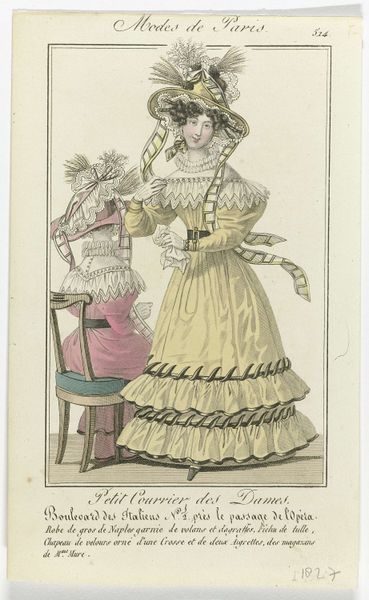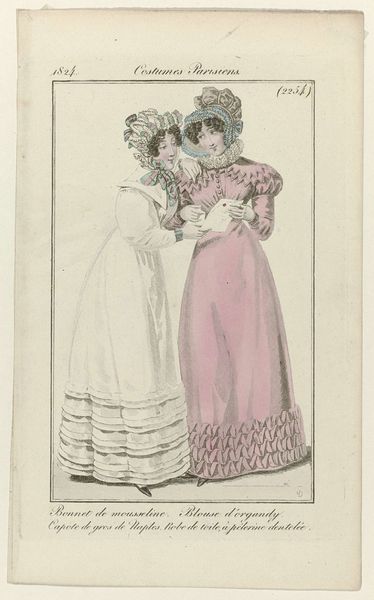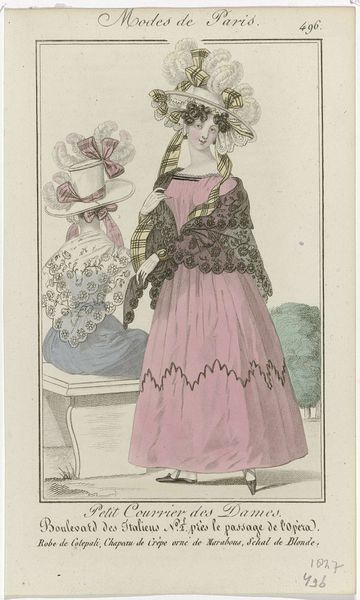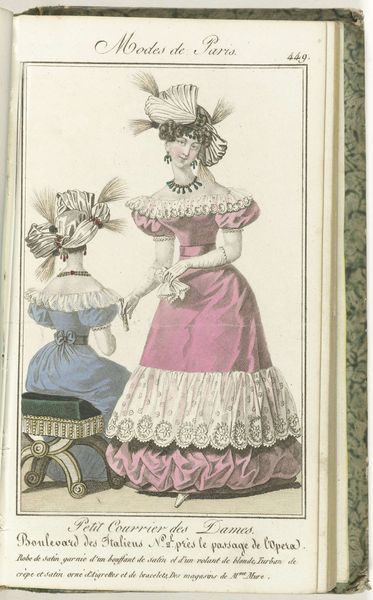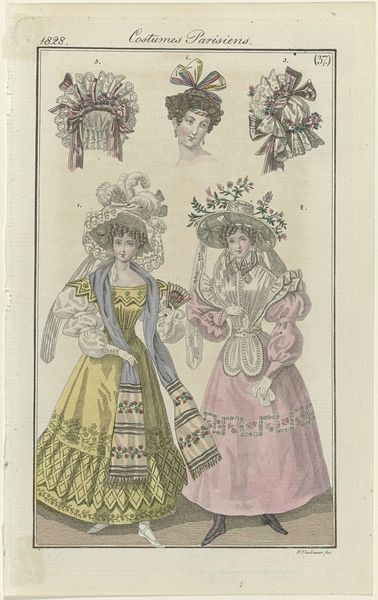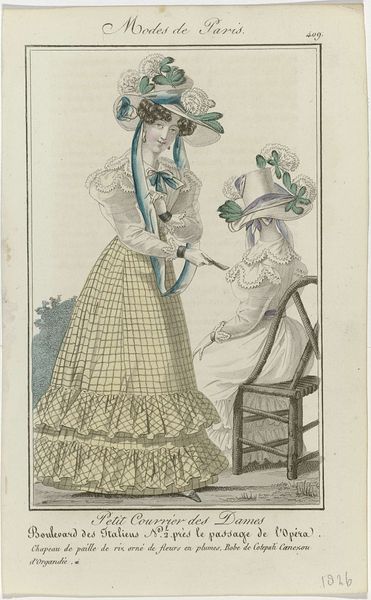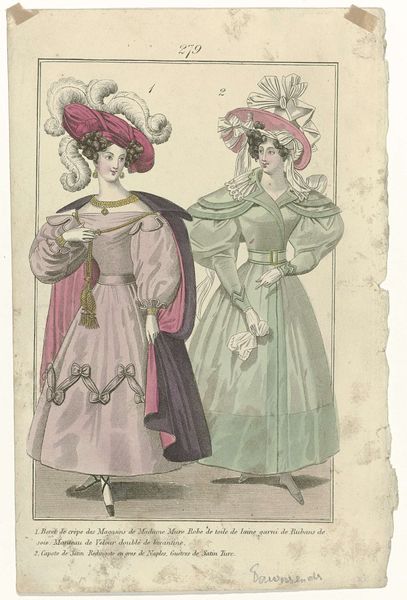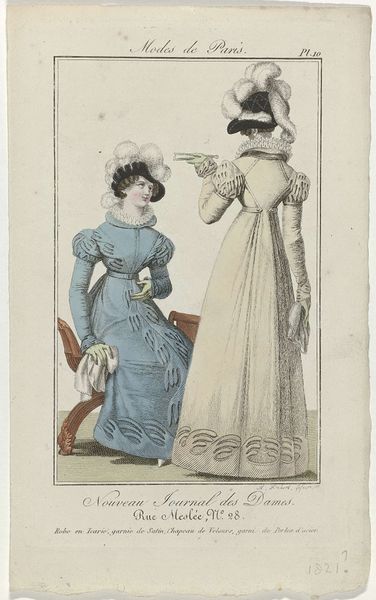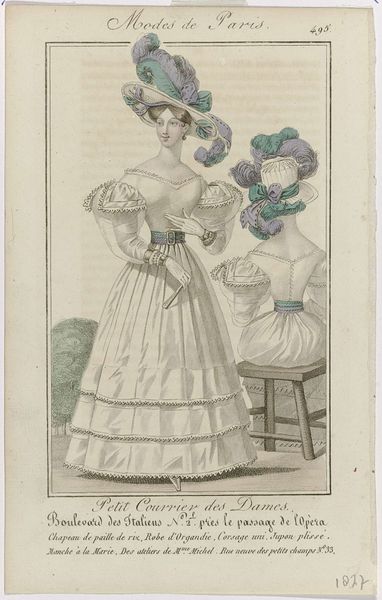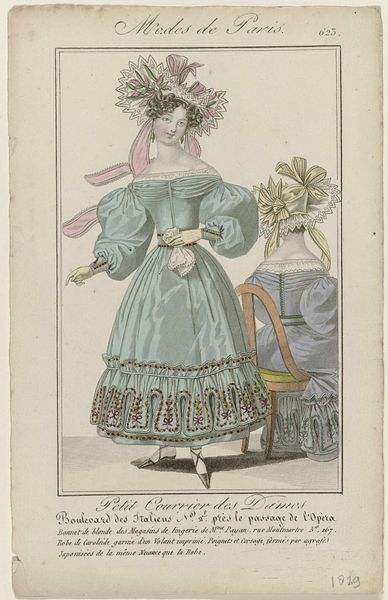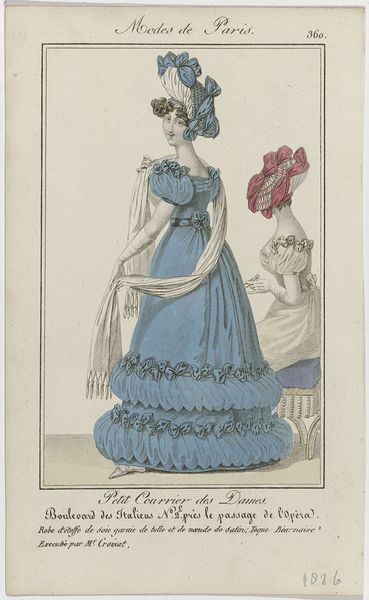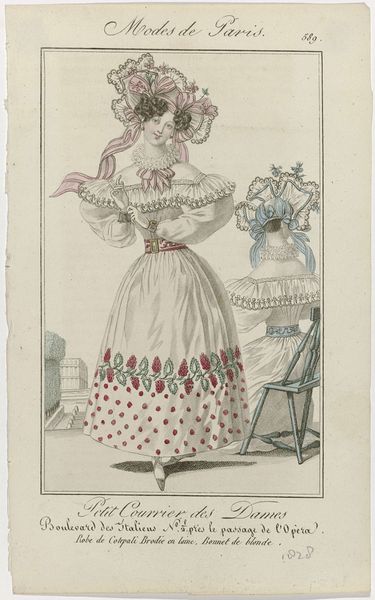
drawing, paper, ink
#
portrait
#
drawing
#
paper
#
ink
#
romanticism
#
genre-painting
#
decorative-art
#
dress
Dimensions: height 234 mm, width 142 mm
Copyright: Rijks Museum: Open Domain
Curator: So here we have “Le Conseiller des Grâces,” or “The Advisor of Graces,” a charming print by Tallois dating back to 1828. It's ink on paper, presenting two stylish figures. Editor: It's a fashion plate! I’m immediately drawn to the textures; it reminds me that the clothing was manufactured, moved across nations, sold, and eventually worn. It brings up questions about who actually produced these materials. Curator: That's a fascinating take. The detailed renderings—the puffed sleeves, lace trim, and extravagant hats, don't you think there’s something deeply romantic about it all? A certain longing or idealism comes through for me. Editor: Romanticism definitely held a certain appeal, but looking closer I wonder about labor. All this embellishment, it represents considerable work hours; think about the hands that stitched and sewed. We can consider this fashion plate as document that is indirectly related to social inequalities during the time. Curator: True, there’s a bittersweet element there; elegance tinged with an awareness of human cost, right? Those big hats laden with ribbons… the excess becomes almost symbolic of societal imbalances. They’re so big they must’ve been rather heavy to carry. Editor: Precisely. We have to acknowledge the labor behind these material goods in the artistic dialogue itself. Also the location in which these textiles, or hats were produced, and by whom. Were there differences between "couture" and general-wear materials? Curator: Yes, now I cannot unsee the tension you point out between beauty and industry. Makes you reconsider the true cost of “grace”, doesn’t it? And the skill needed to render all these details so exquisitely…It’s all so incredibly stylish. Editor: Indeed. It compels me to seek more information about Tallois, the lithographer shop, and these unnamed female subjects and the fashion world. The very idea of "Grace" needs a bit more unpacking in the social context of 1828. Curator: Looking closer together makes me see it differently… Perhaps the pursuit of beauty wasn't as carefree or apolitical as one might have thought!
Comments
No comments
Be the first to comment and join the conversation on the ultimate creative platform.
